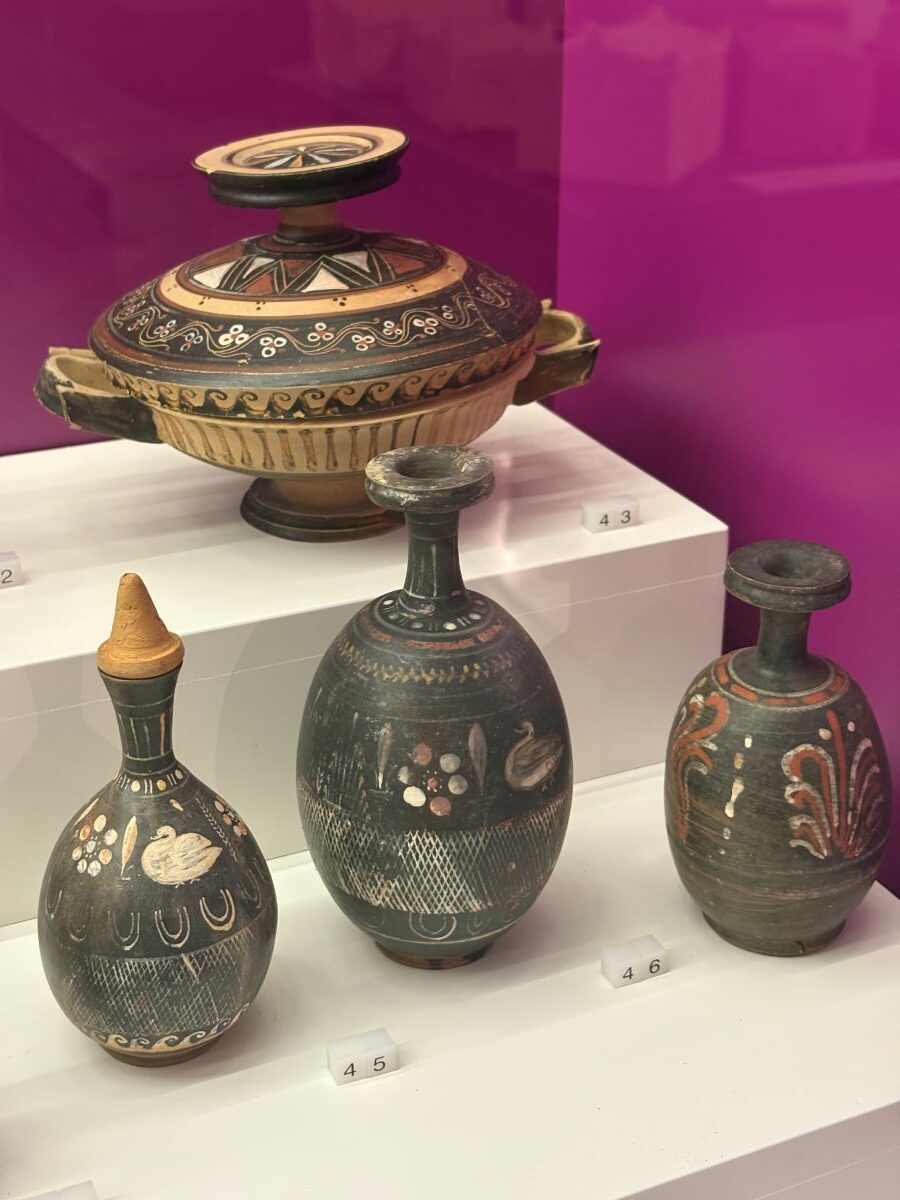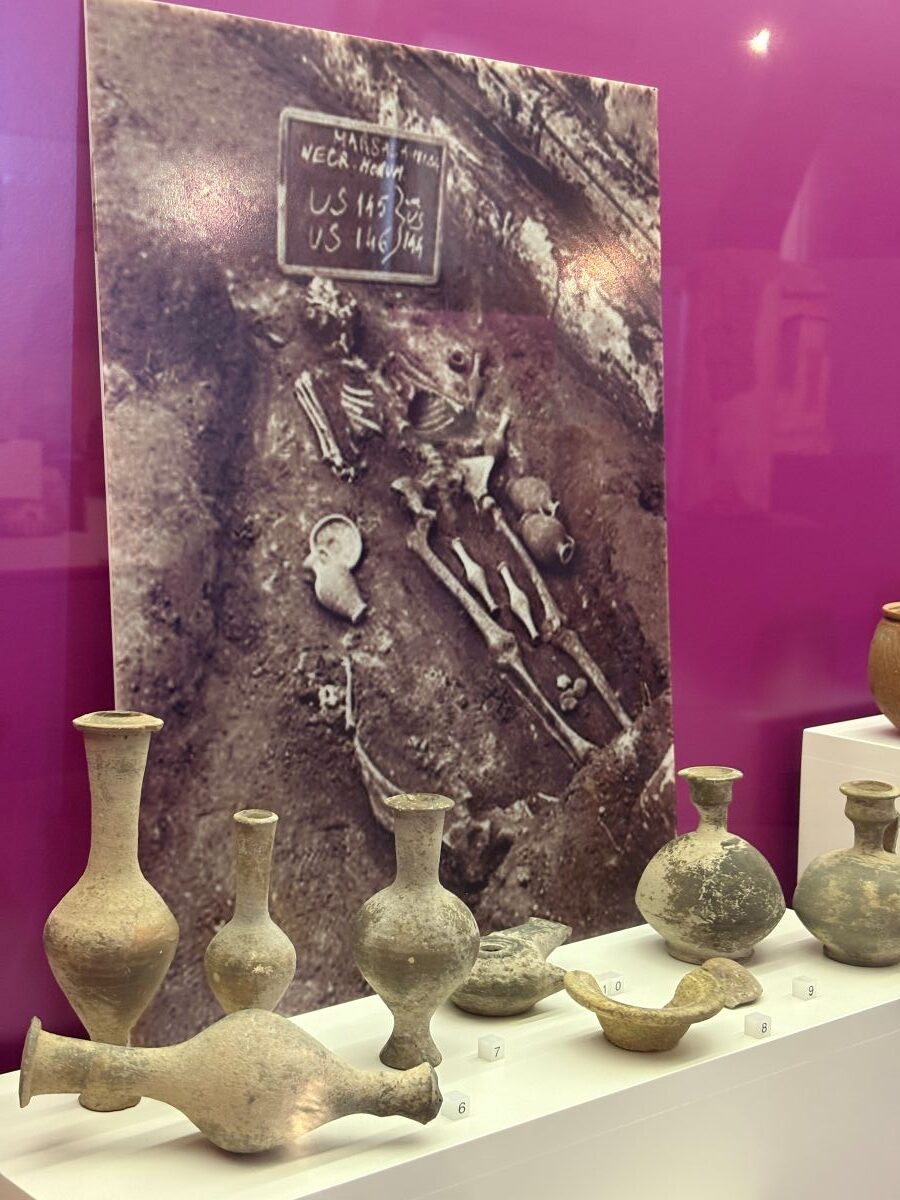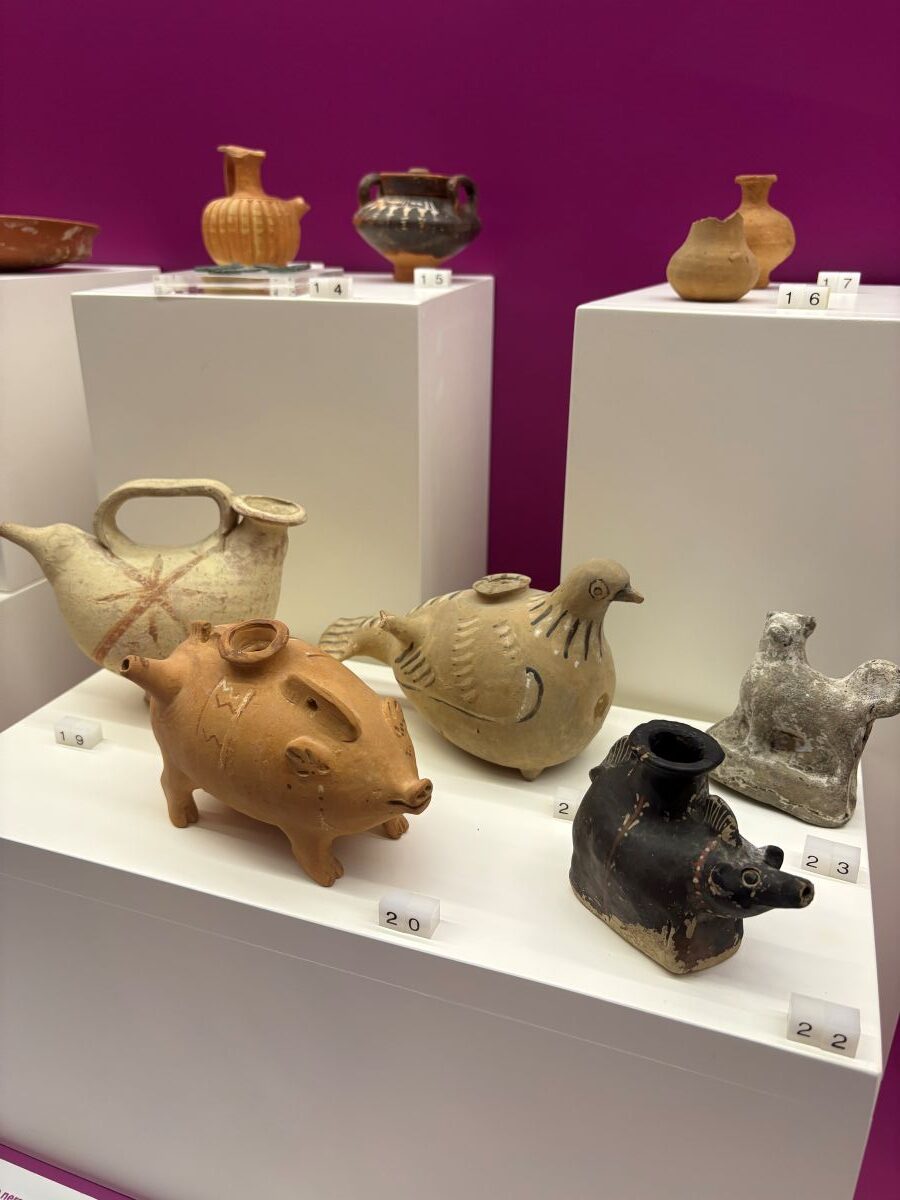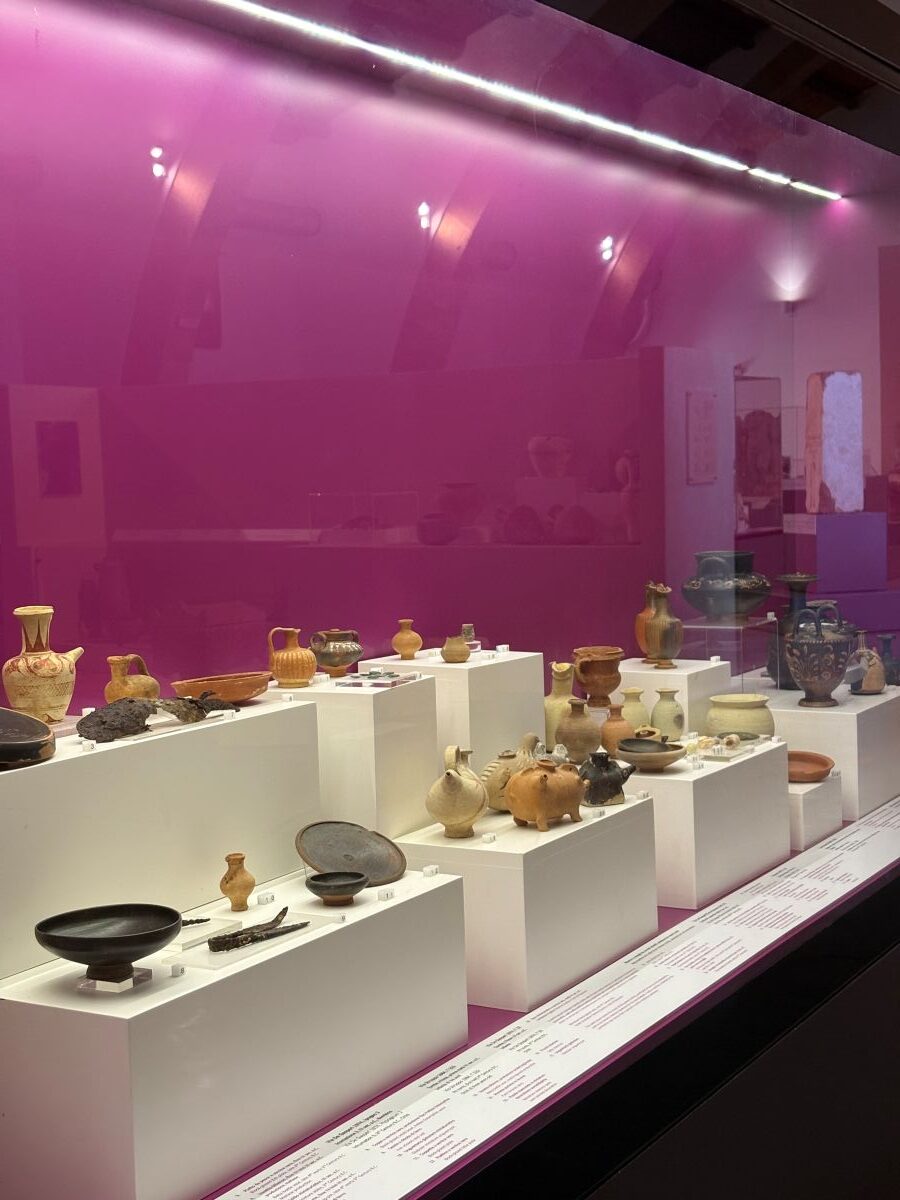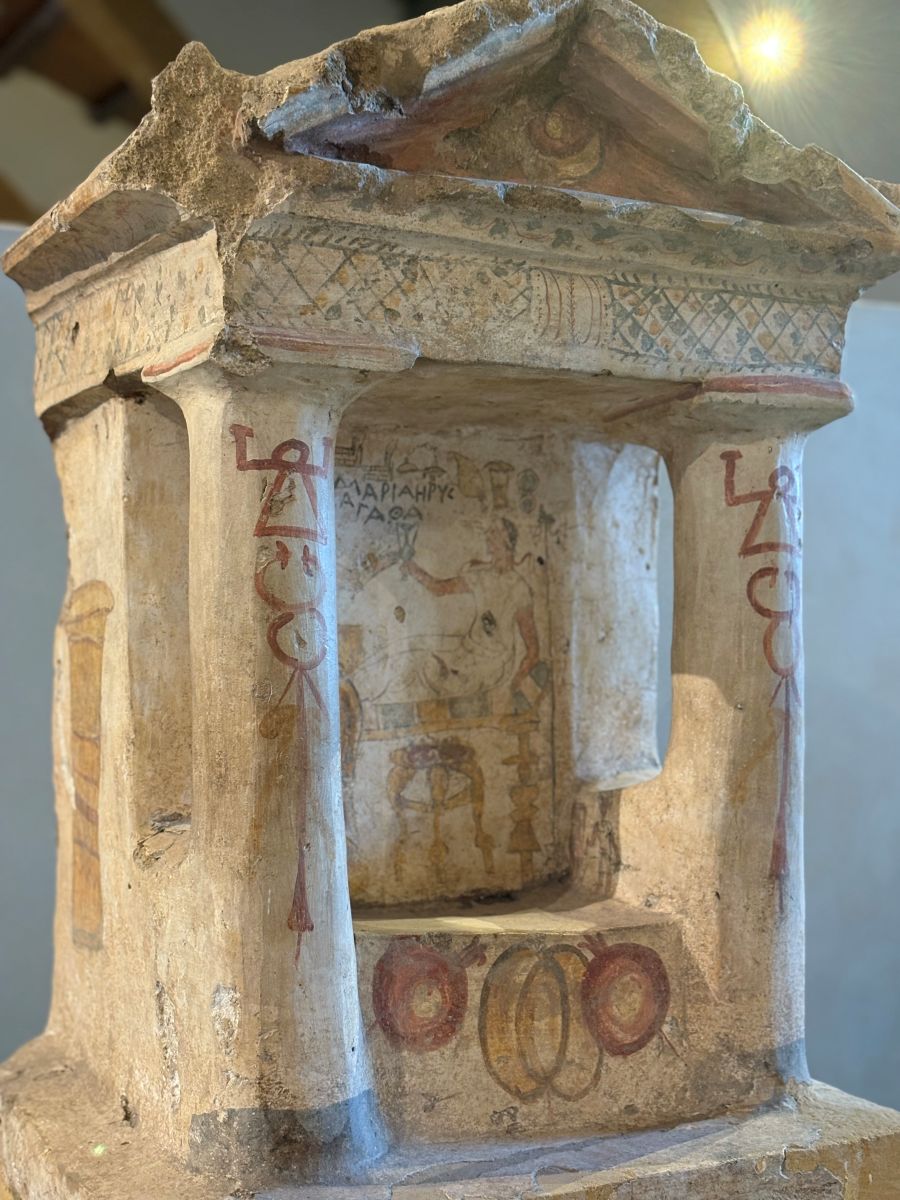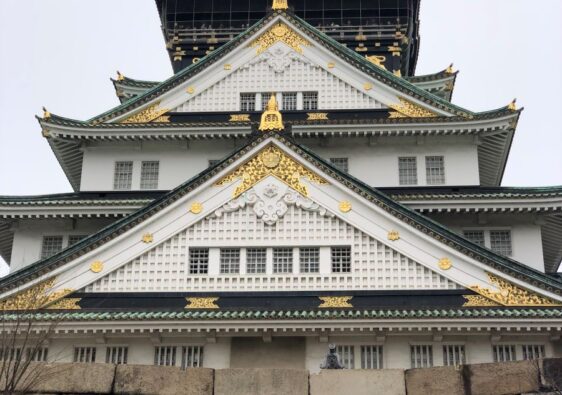Three reasons brought me to Marsala and they are salt, wine and ancient history. This relatively new city is founded on the most ancient of sites, a city called Lilibeo. Settled as early as the 8th century BC, there are ruins and history to be discovered. Come and see ancient shipwrecks at the Marsala Archaeological Museum with me.

Getting There
You really can’t miss it; this museum is situated at the most western tip of the island of Sicily. The entire point is where the once ancient city was located. Inside a massive old wine cellar, we find the Marsala Archaeological Museum and Park. Actual name is Museo Archeologico Lilibeo and Baglio Anselmi.
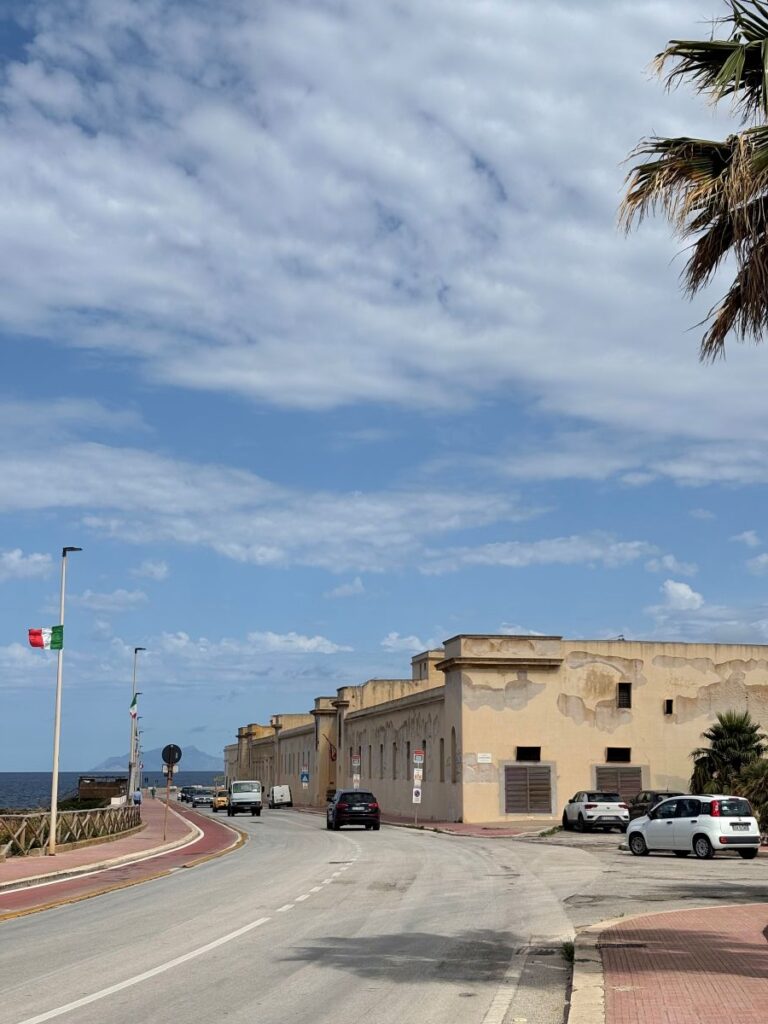
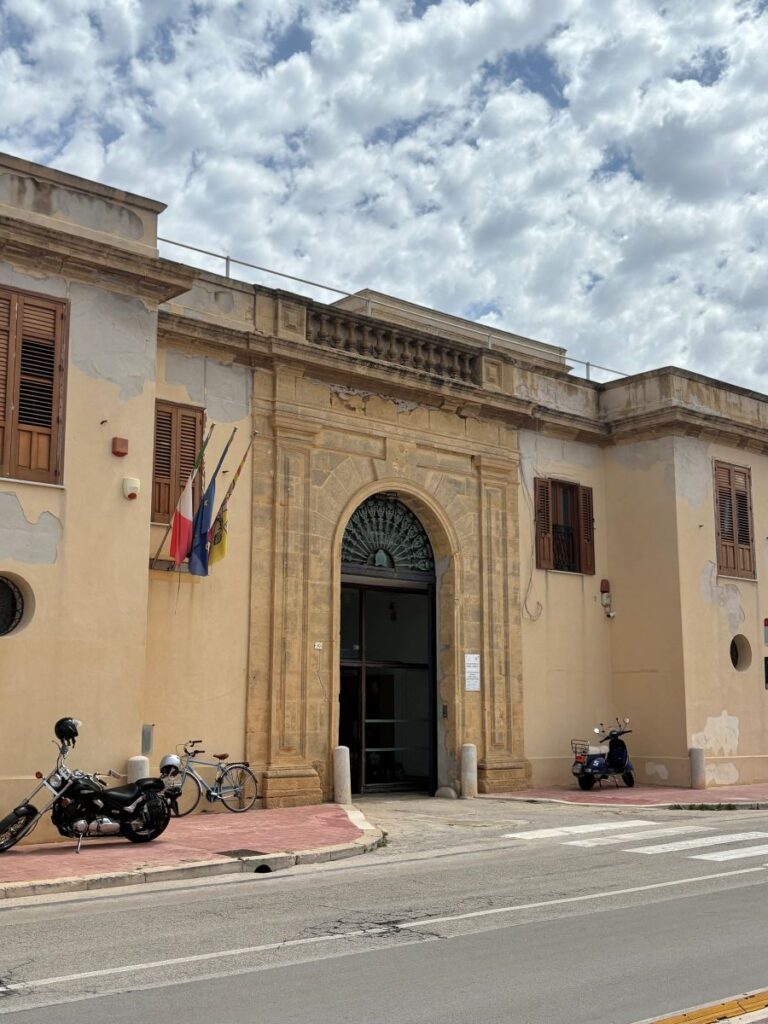
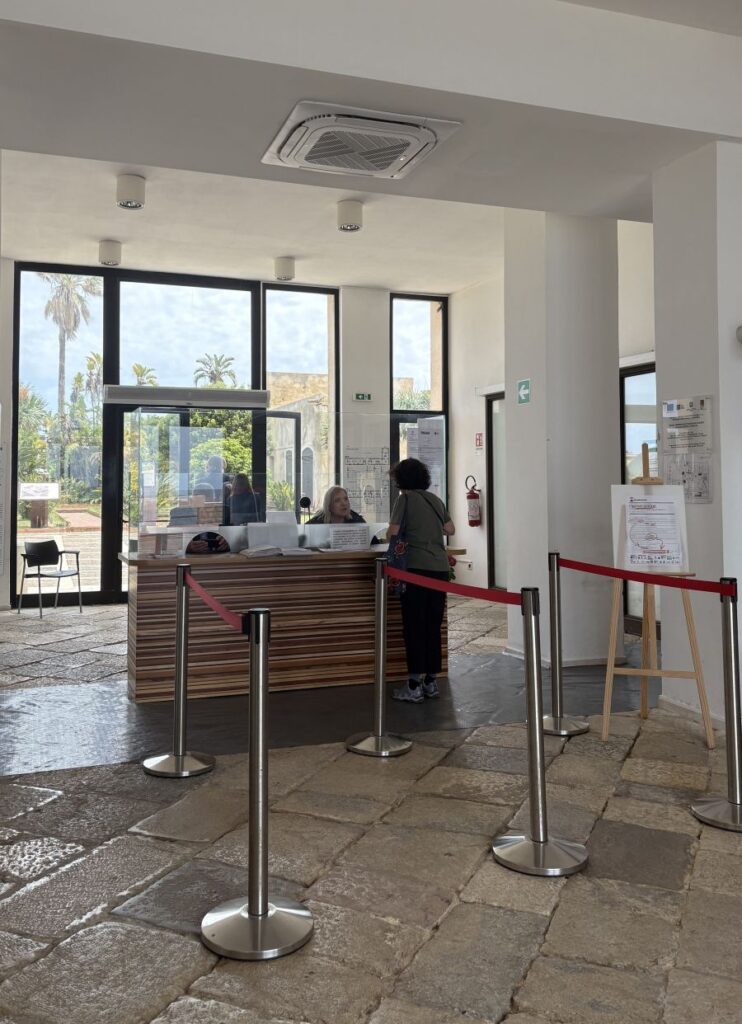
Tickets to enter are separated into three categories. Visitors can enjoy just the interior displays which includes the two ships, for €10. The external park where the ancient ruins are located, for €4, or everything for €12. While google reviews say to skip the outdoor park, for me it was worth the extra two euros to see the mosaics alone.
The Museum
Once you have walked past the entrance, you can turn left or right. Left takes you into a vast space that is filled with static displays of treasures and artifacts that have been found at this site itself and various other locations around Marsala. There are some unique and interesting pieces and it’s a lovely and quite space to explore.
Turn right and you enter an equally vast space and see your first ship! This one is the Punic Ship.
Punic Shipwreck
Found directly off the coast in 1969, this ancient ship dates from the 3rd century BC and was a warship. From inscriptions found on the wood, it can be accurately identified as Punic and most likely was a part of the Carthaginian navy.

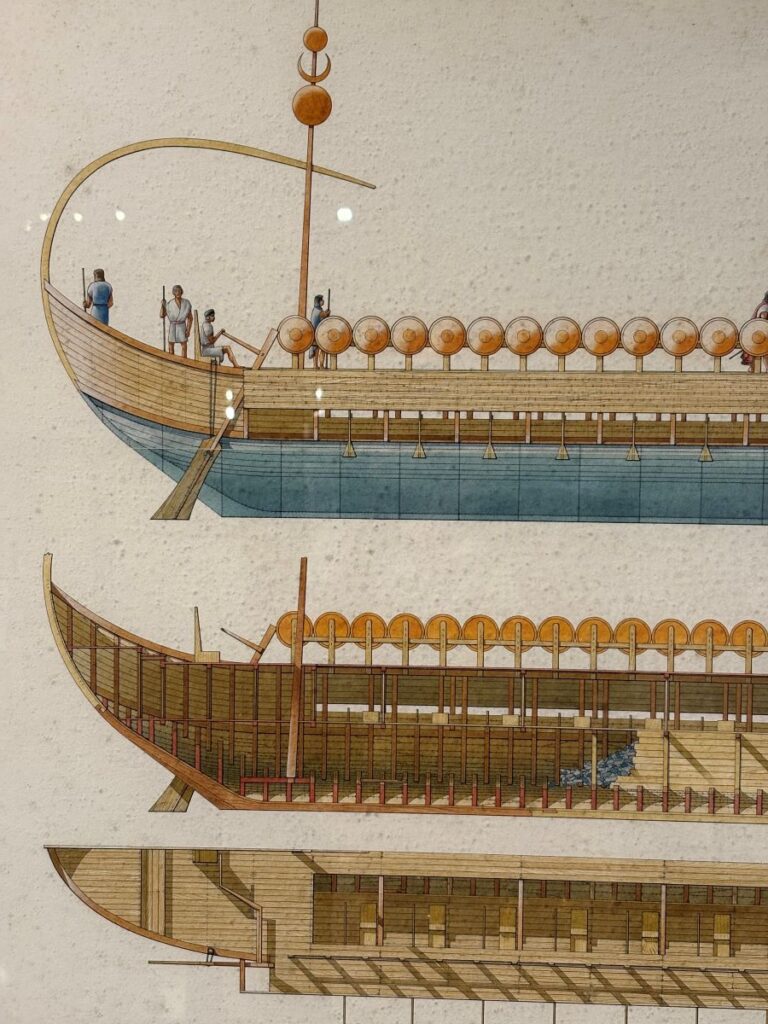
Using pieces recovered from the seabed in the 1970’s, a reconstruction of the actual size of the ship is what we see today. Most of what was salvaged belongs to the hull of the ship and items that were found around it are cased on either side. Those old timbers are remarkable especially seeing the Punic numbers inscribed into the wood. These were used to label which pieces went where during assembly over 2,500 years ago.
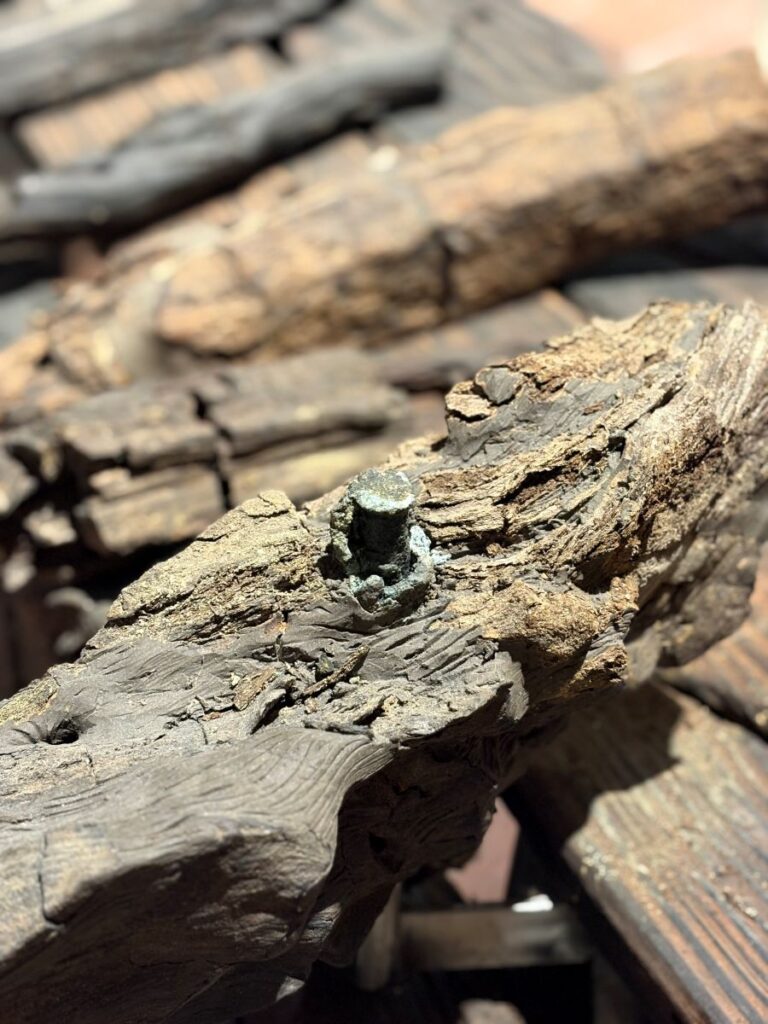
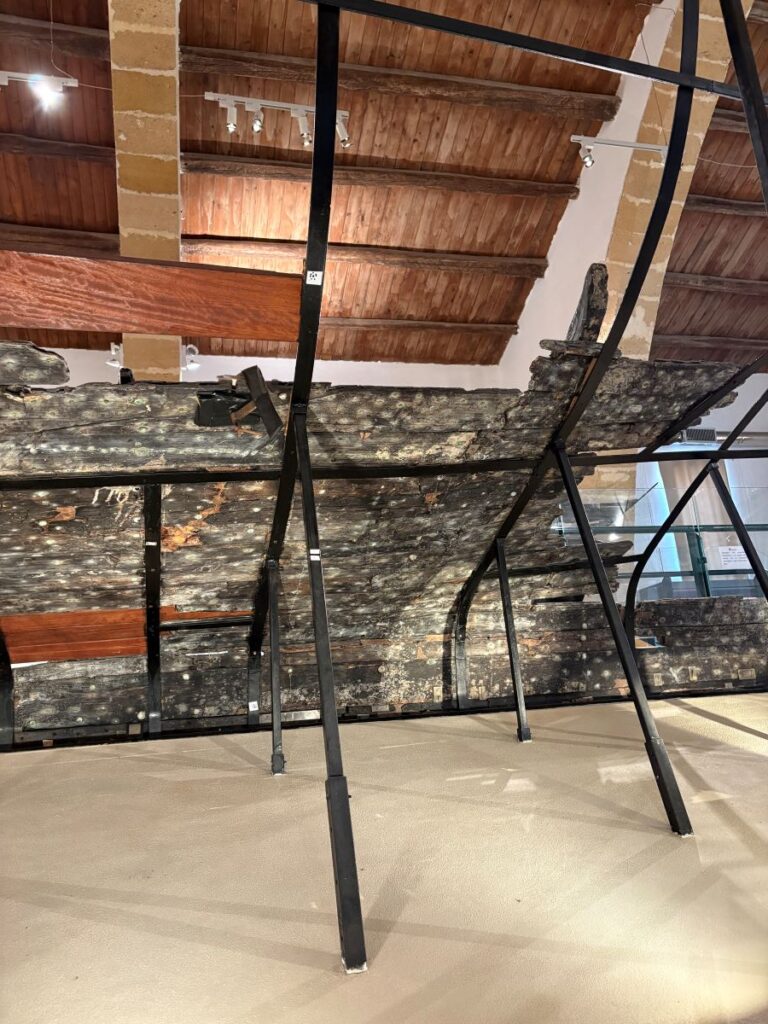
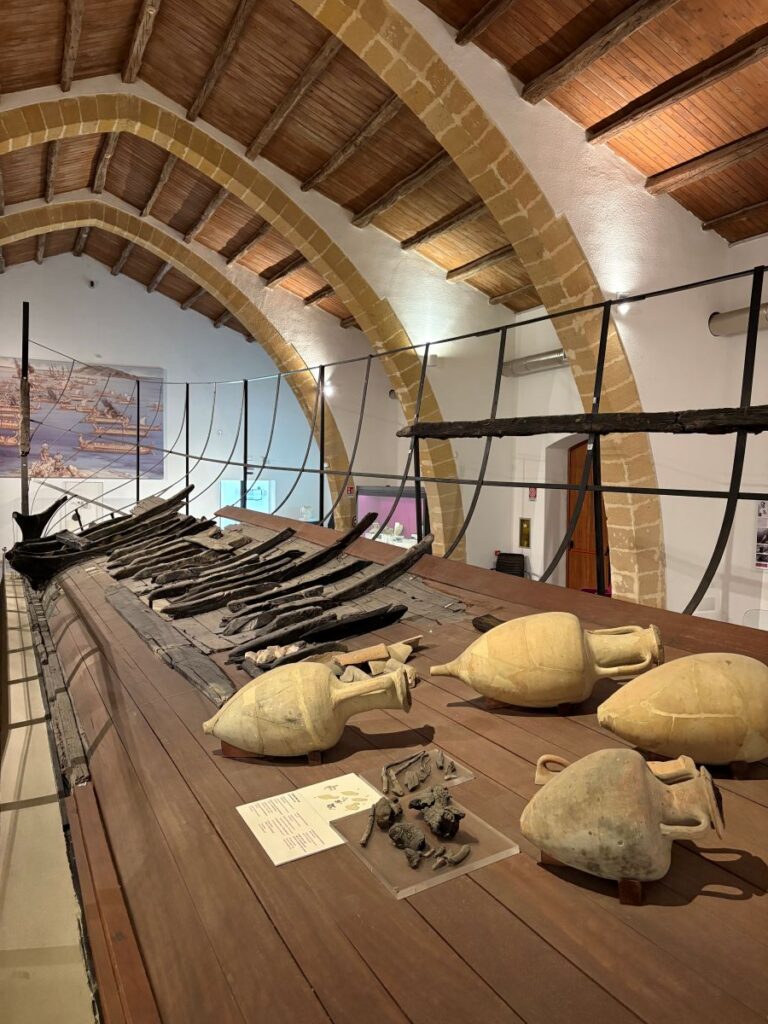
Roman Shipwreck
Now walk to the back of the room and you will go through a sealed set of doors into a space that is very humid. Here see before you, the Roman Ship of Marausa! This beauty dates from the 3rd century AD and was a merchant vessel.
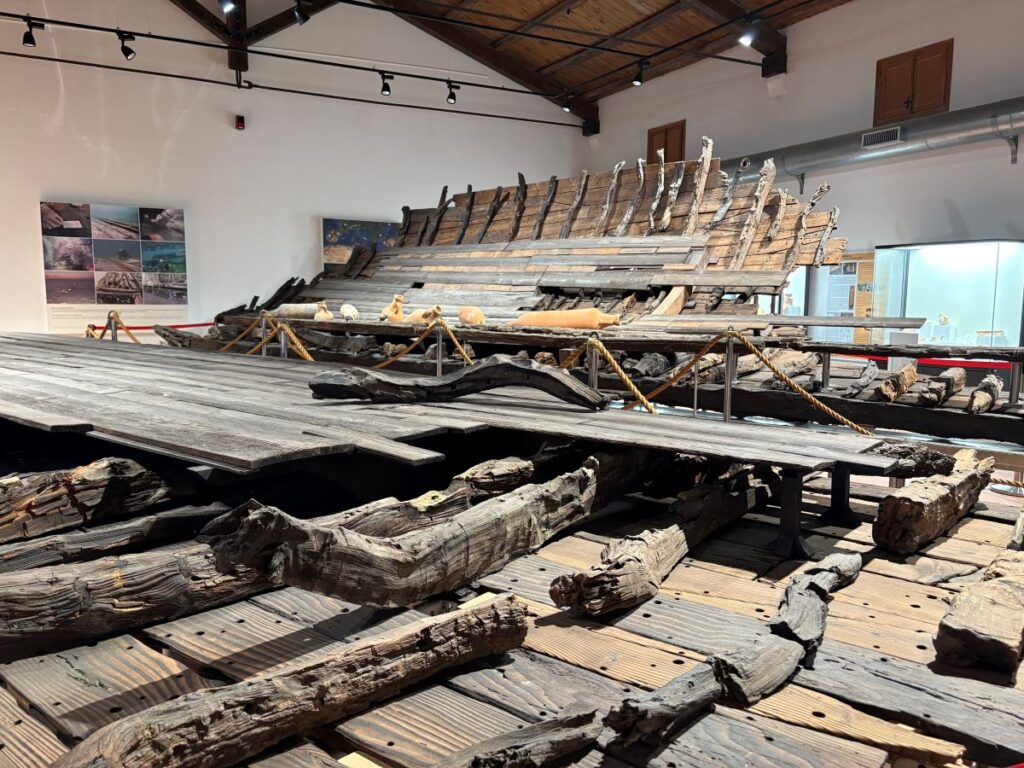
Discovered in 1999 at a depth of only two meters, she is remarkable. The entire wreck measured 27 meters long by 9 meters wide, making it the largest ever shipwreck from this era, found in Italian waters.
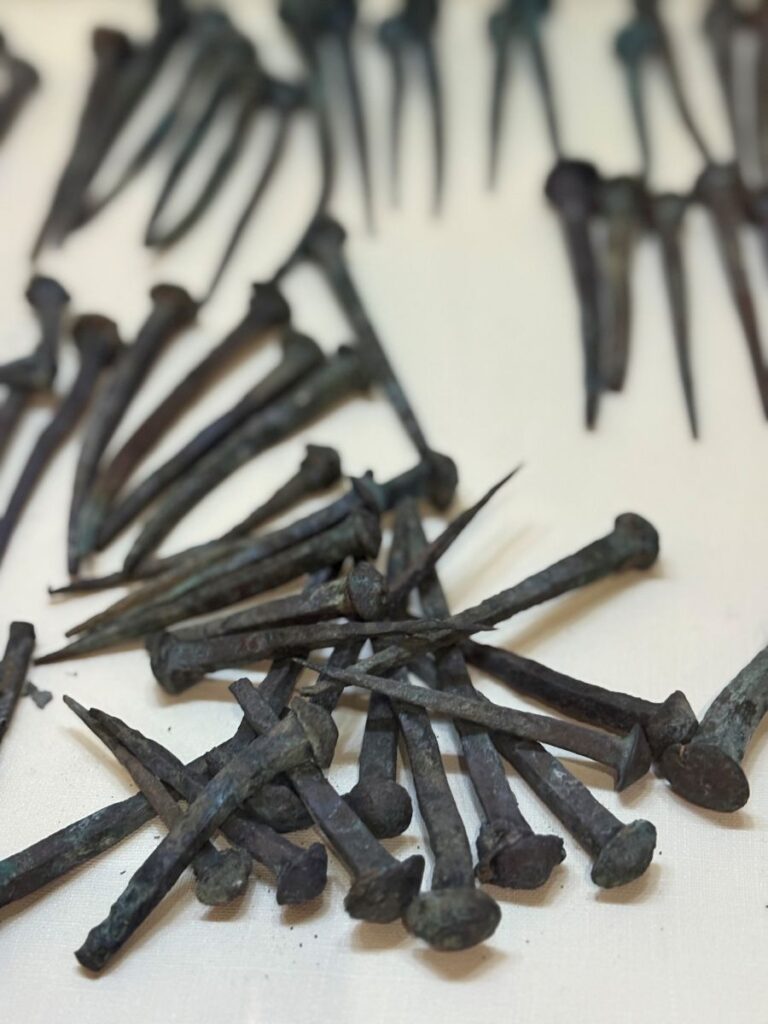
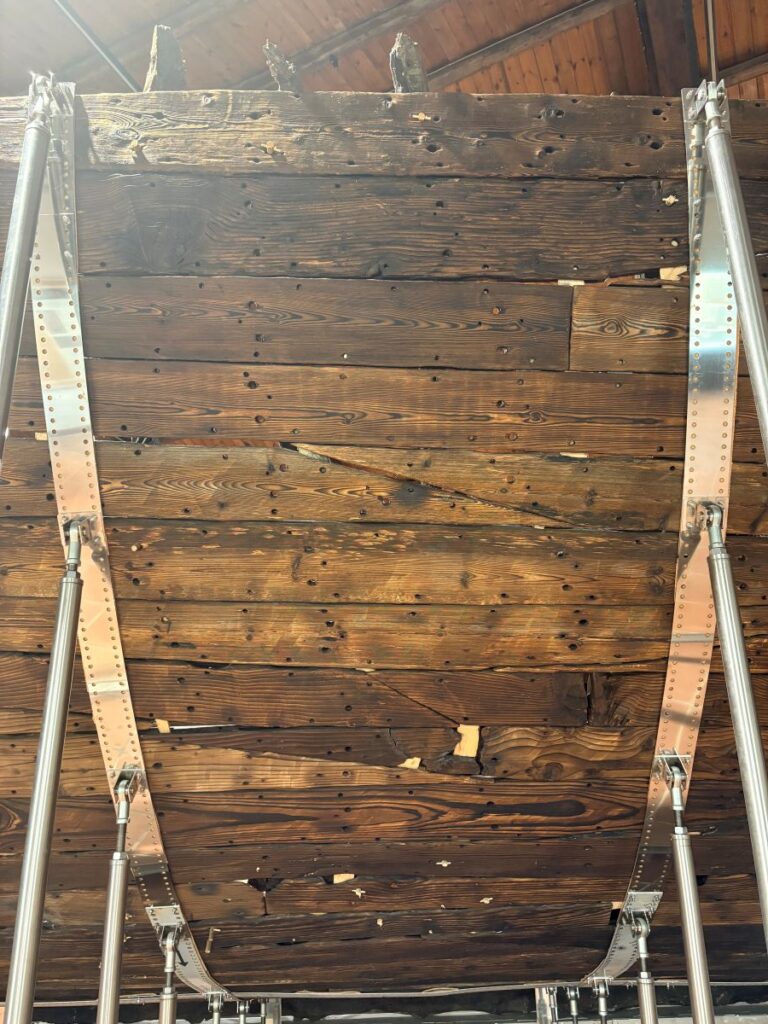
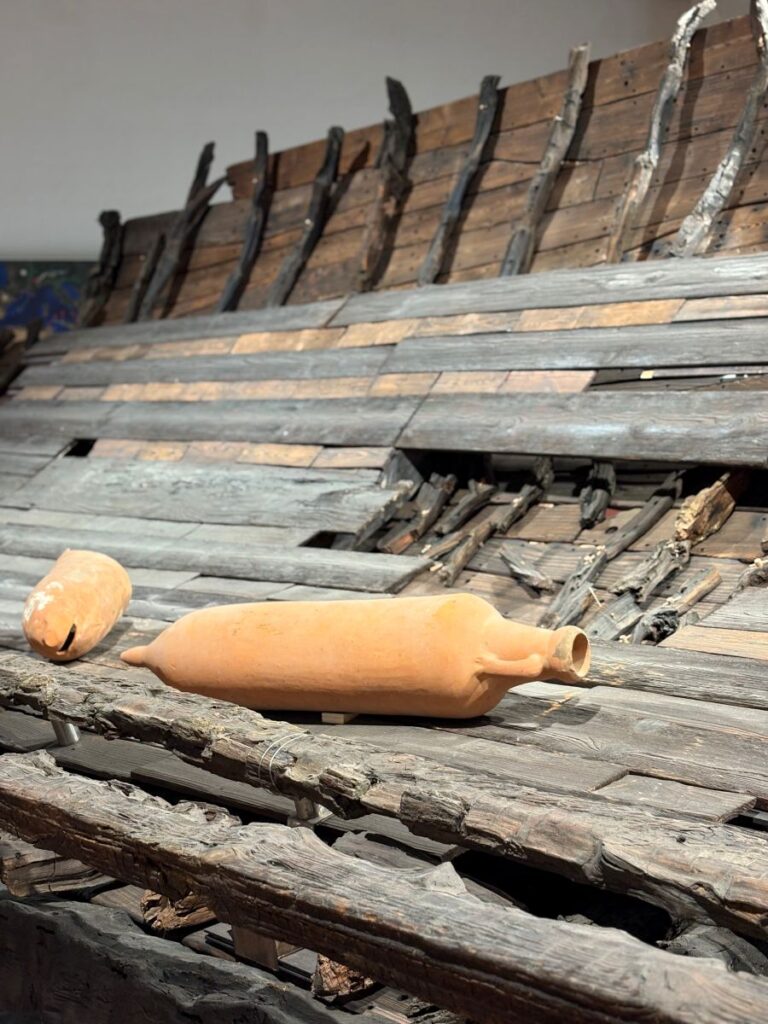

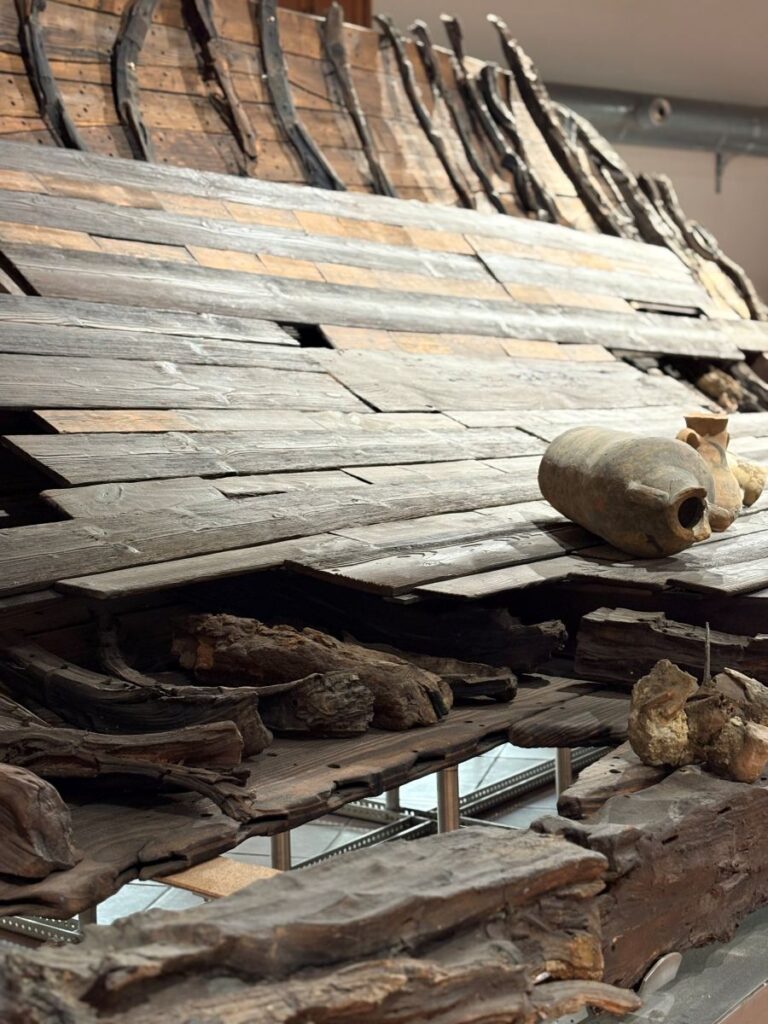
Made of ash, the huge timbers with their natural patina are amazing to see. This vessel was carrying a full load of pottery amphorae from Africa. These and other treasures such as the nails, can be seen in various cases surrounding the ship. Because of the fragility of this piece, only 20 persons are allowed into the room at any given time. Doors must be resealed once you have entered and exited to maintain the correct environment.
Archaeological Park
Once you have had your fill of the museum, walk through the doors just behind the entrance area out into the courtyard of the old winery. This space appears a little un-cared for, however find a map of the grounds for reference as you proceed. Walk through and out into a wide-open grassy space. There are several paths to chose but they will all lead to the ancient Roman road.
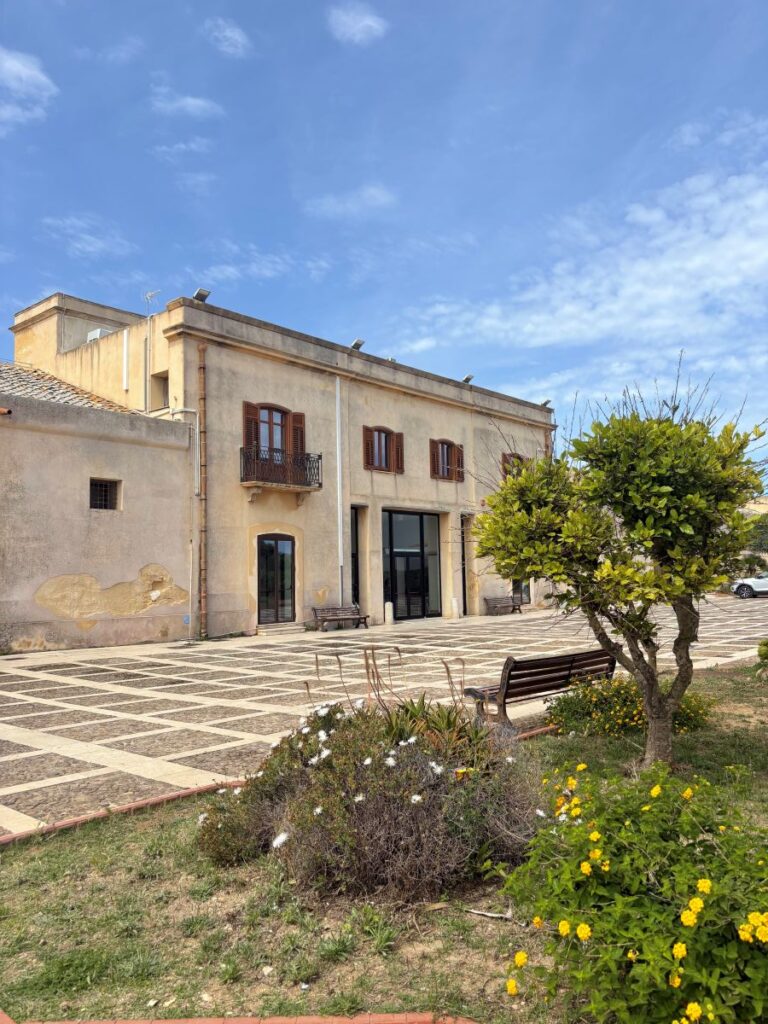


Just before the road are the ruins of the roman baths, however these, at the time I visited are full of overgrown weeds.


Once past the beautiful white marble road, walk to the back of the site. What you are walking over is the ancient city of Lilibeo. At the far end, a group of workers was busy cutting weeds in a large space that I could not access because of their activity.
Roman Insula
Look for the covered portion at the rear of the property now and head there. What you will discover is the Insula, a large set of dwellings of very wealthy Romans. Constructed on Phoenician remains, this section dates from the 2nd century AD.
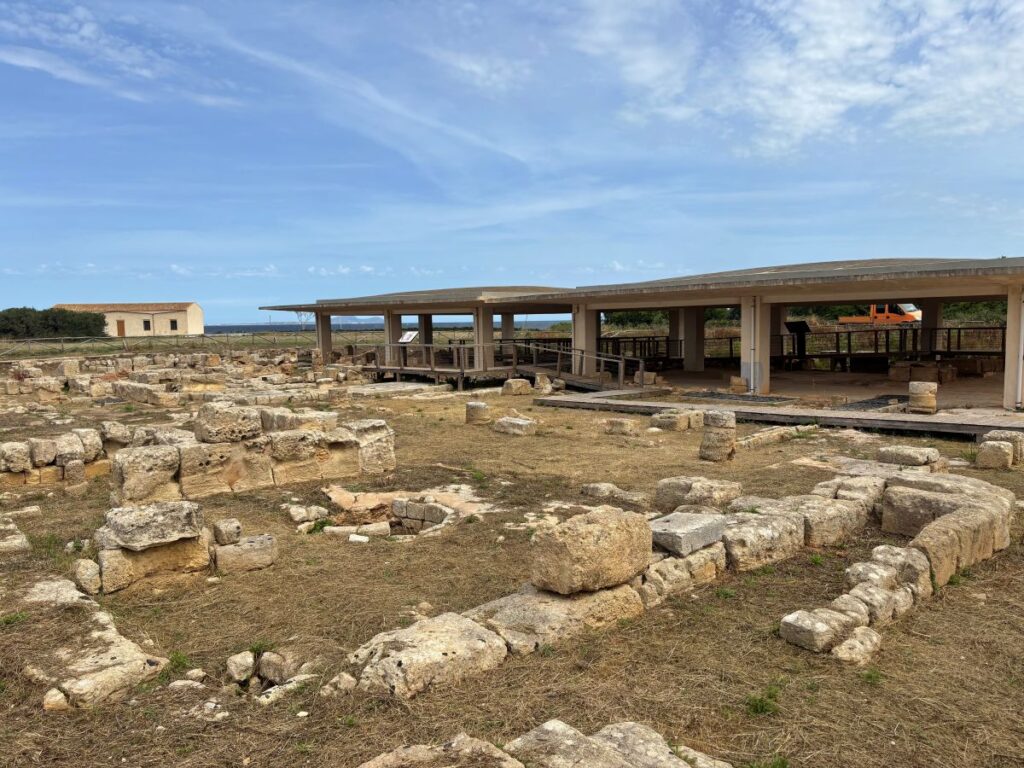
Proceed to the above ground walkway and see all of the mosaic floors. A few are absolutely beautiful, not nearly as lavish as other sites I have visited but certainly worth seeing.

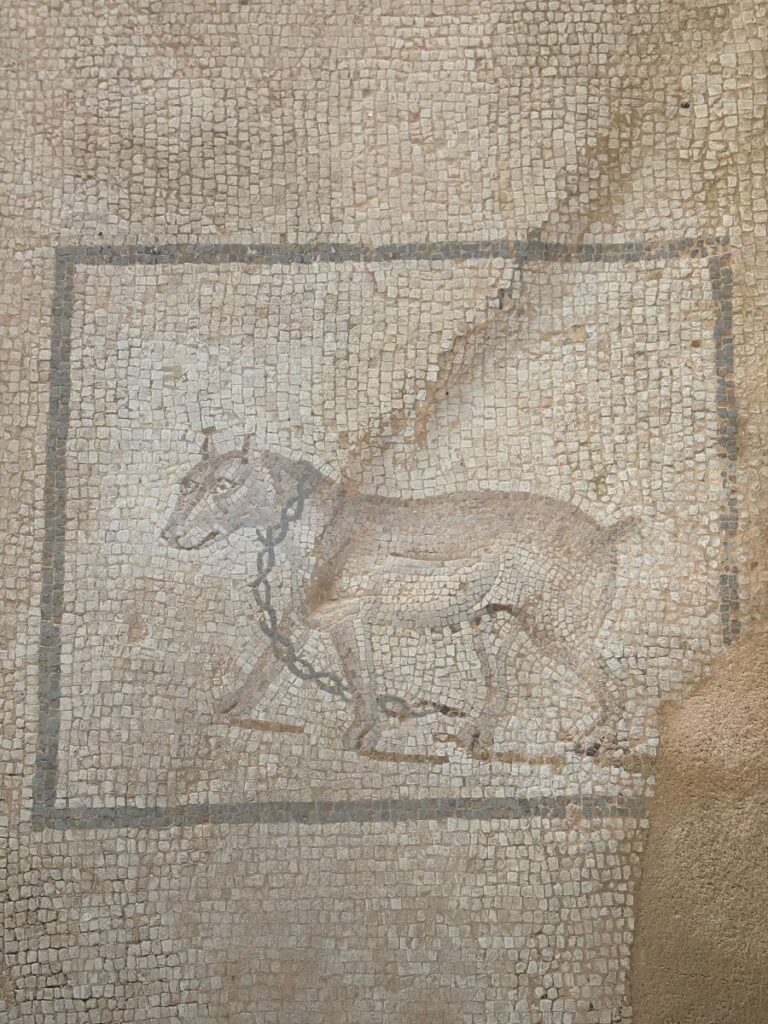
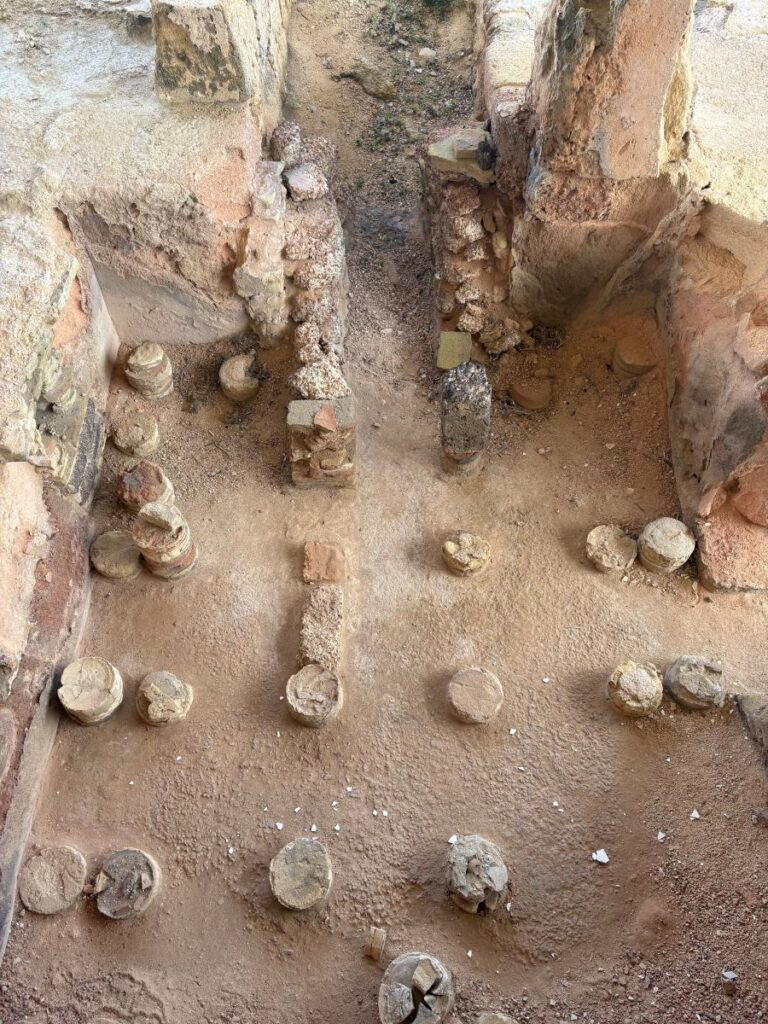
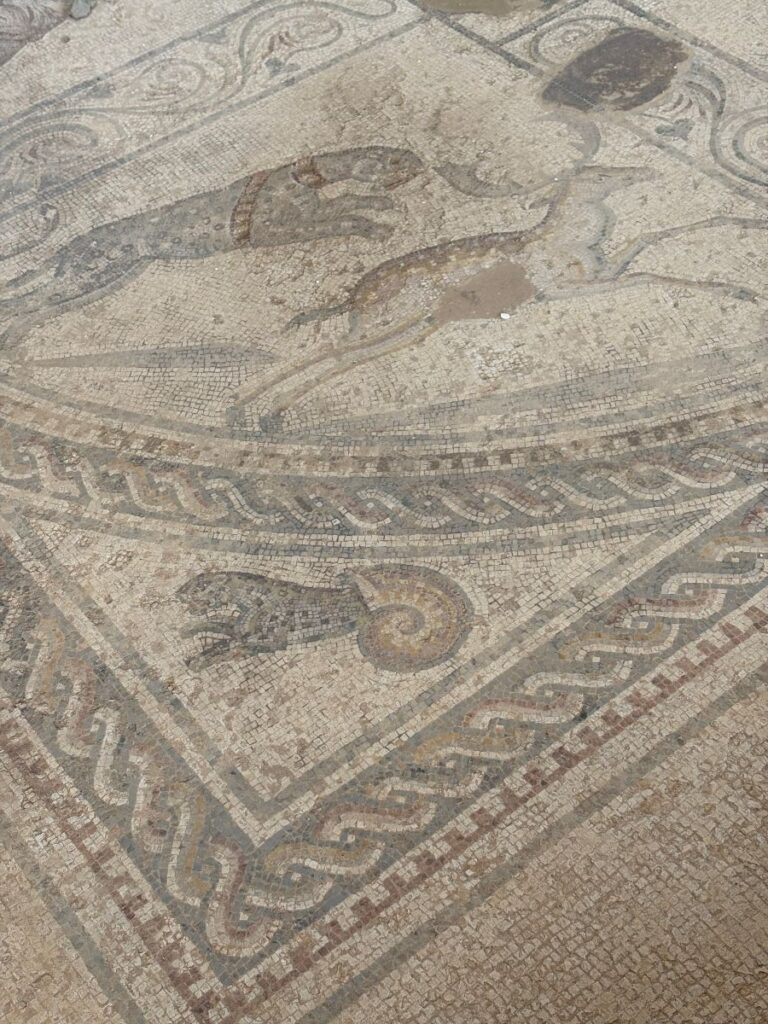
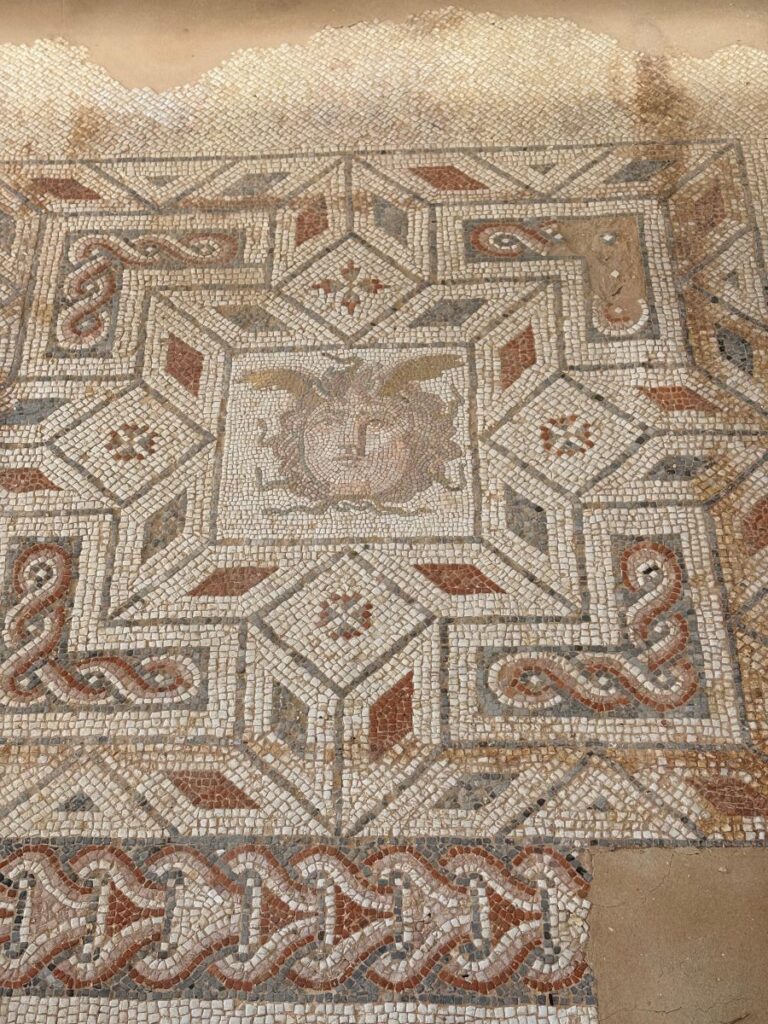
For me, the best part but difficult to see, is the remaining mosaic Sicilian Trinacria! This image that has become the symbol of Sicily has Medusa at its centre. Surrounding her are three legs that represent the three capes of Sicily, Peloro, Passero and Lilibeo the ancient city I stand upon in this moment!
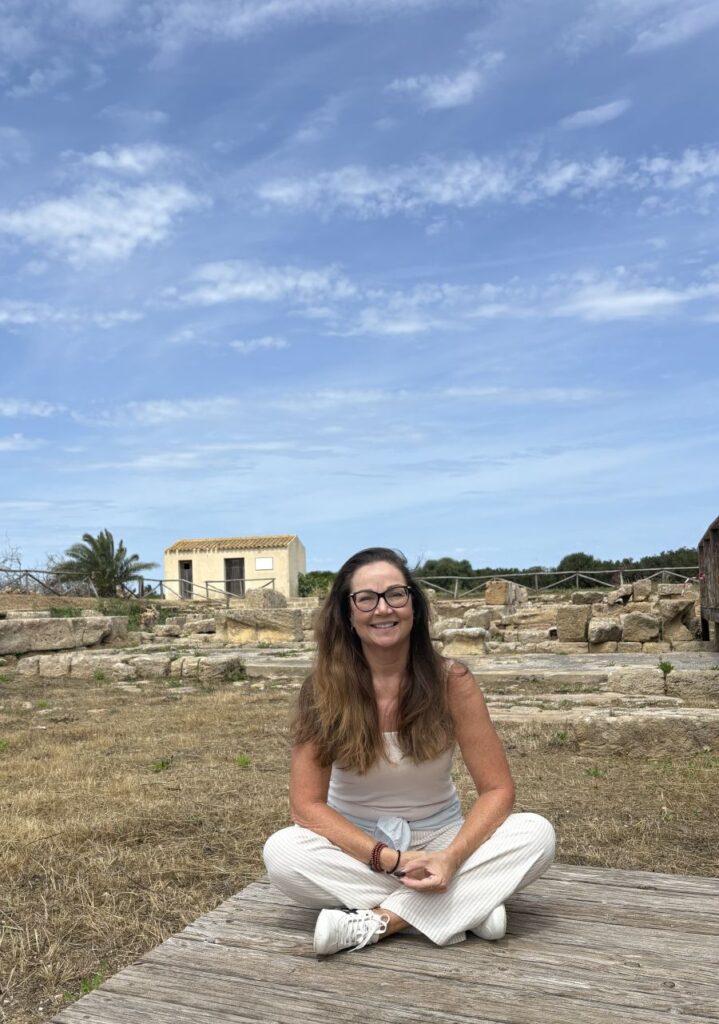
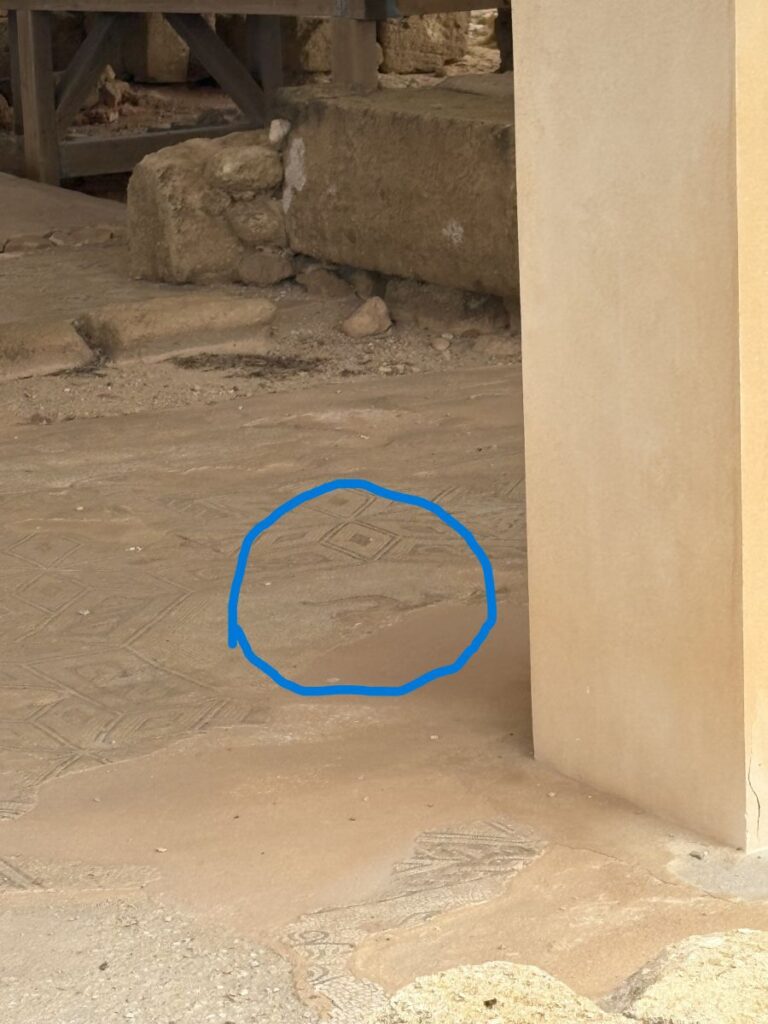
To see the actual trinacria in a 2,000 year old Roman house is incredible to me.
All together the Marsala Archaeological Museum is definitely worth seeing. Your enjoyment will arise from how deeply you love history. While the exterior is certainly lacking, the interior and the two incredible ancient shipwrecks are such a unique thing to see and learn about.

